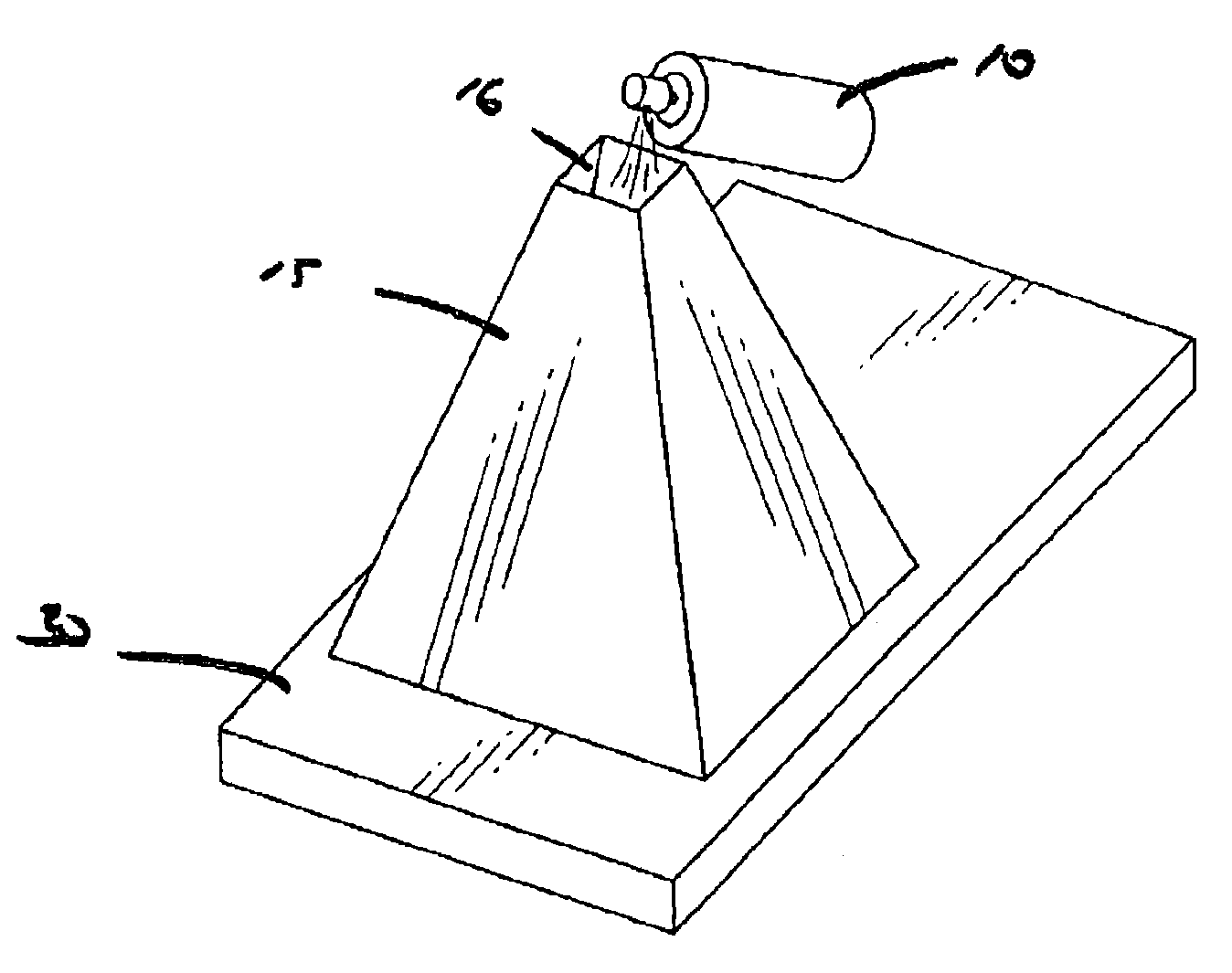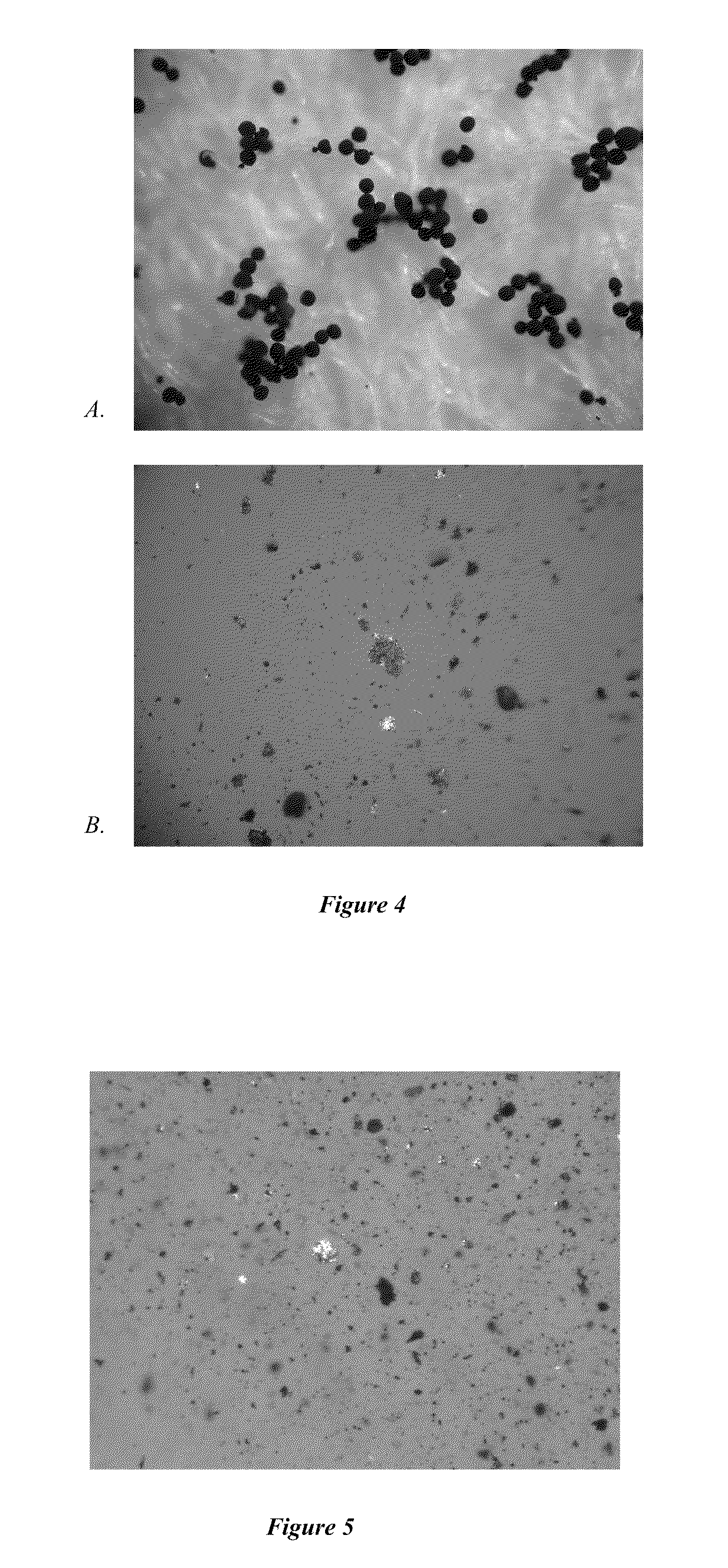Aerosolized fingerprint powder compositions
a fingerprint powder and composition technology, applied in the field of fingerprint art, can solve the problems of inability to compare detail, inability to detect latent fingerprints, and fragmentary latent prints, and achieve the effect of maximum contrast and maximum detection of latent fingerprints
- Summary
- Abstract
- Description
- Claims
- Application Information
AI Technical Summary
Benefits of technology
Problems solved by technology
Method used
Image
Examples
example 1
[0095]This Example is a preferred fingerprint composition. About 2 grams of Lightning White™ fingerprint powder is placed in an aerosol can manufactured by CCL Container Corporation, Hermitage, Pa. The container is provided with two steel mixing balls that are about 4 to 6 mm in diameter. A dip tube is asserted in the can and them the can is crimped and sealed. An aerosol valve is supplied by Summit Packaging Systems, Inc., Manchester, N.H. In this example, the valve assembly comprises an actuator (Part. No. 78858), stem (920103), stem gasket (77505), spring (77401), body (97311), dip tube (200610), and mounting cup (77792). The crimped aerosol can is then charged with a hydrocarbon butane propellant to a pressure of about 31 psig at 70 degrees Fahrenheit. The product is actualized with 20 grams of A-31 propellant. The final actuator button is fixed and the product is ready for spraying.
example 2
[0096]This Example demonstrates four exemplary embodiments of the present invention. These non-limiting example incorporate four different aerosol powders using various can sizes filled with particular powder masses (small can: 1 g powder, medium can: 4 g powder, large can: 7 g powder). Two different non-porous substrates bearing latent print impressions from an oil standard of varying deposition intensity and ages were used in this example. Half of the impressions were processed using cyanoacrylate ester (CNA) prior to the application of the powder. The other half of the impressions were processed directly with the aerosol powder fingerprint formulations of the present invention. Results indicate this process to be an effective technique on non-porous surfaces without CNA. In summary, this example shows that the present invention is an effective fingerprinting method, and that it maintains a relatively even distribution of powder, controls the amount of powder deposited, and decrea...
PUM
| Property | Measurement | Unit |
|---|---|---|
| particle size | aaaaa | aaaaa |
| particle size | aaaaa | aaaaa |
| weight % | aaaaa | aaaaa |
Abstract
Description
Claims
Application Information
 Login to View More
Login to View More - R&D
- Intellectual Property
- Life Sciences
- Materials
- Tech Scout
- Unparalleled Data Quality
- Higher Quality Content
- 60% Fewer Hallucinations
Browse by: Latest US Patents, China's latest patents, Technical Efficacy Thesaurus, Application Domain, Technology Topic, Popular Technical Reports.
© 2025 PatSnap. All rights reserved.Legal|Privacy policy|Modern Slavery Act Transparency Statement|Sitemap|About US| Contact US: help@patsnap.com



